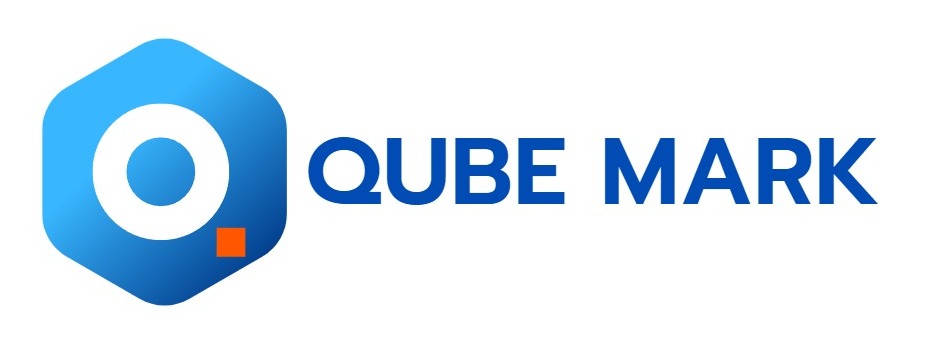NEW YORK, Jan. 31, 2025 -- Report with market evolution powered by AI - The global esports market size is estimated to grow by USD 3.47 billion from 2024-2028, according to Technavio. The market is estimated to grow at a CAGR of 20.5% during the forecast period. Increase in branding through e-sports is driving market growth, with a trend towards increase in e-sports betting. However, growing cost of game development poses a challenge. Key market players include Activision Blizzard Inc., Amazon.com Inc., ANT Esports, Beyond the Summit, Caffeine, Electronic Arts Inc., Gfinity Plc, Hi-Rez Studios Inc., Intergalactic Gaming Ltd., Kabam Games Inc., Modern Times Group MTG AB, Nintendo Co. Ltd., Riot Games Inc., Rovio Entertainment Corp., Starladder Ltd., Take Two Interactive Software Inc., TaKeTV GmbH, Tencent Holdings Ltd., Valve Corp., and Wargaming Group Ltd..
Key insights into market evolution with AI-powered analysis. Explore trends, segmentation, and growth drivers- View Free Sample PDF
Esports Market Scope | |
Report Coverage | Details |
Base year | 2023 |
Historic period | 2018 - 2022 |
Forecast period | 2024-2028 |
Growth momentum & CAGR | Accelerate at a CAGR of 20.5% |
Market growth 2024-2028 | USD 3467.22 million |
Market structure | Fragmented |
YoY growth 2022-2023 (%) | 19.5 |
Regional analysis | APAC, Europe, North America, South America, and Middle East and Africa |
Performing market contribution | APAC at 43% |
Key countries | US, Canada, China, Japan, and Germany |
Key companies profiled | Activision Blizzard Inc., Amazon.com Inc., ANT Esports, Beyond the Summit, Caffeine, Electronic Arts Inc., Gfinity Plc, Hi-Rez Studios Inc., Intergalactic Gaming Ltd., Kabam Games Inc., Modern Times Group MTG AB, Nintendo Co. Ltd., Riot Games Inc., Rovio Entertainment Corp., Starladder Ltd., Take Two Interactive Software Inc., TaKeTV GmbH, Tencent Holdings Ltd., Valve Corp., and Wargaming Group Ltd. |
Market Driver
The Esports market is experiencing significant growth, with electronic sports gaining popularity among gamers and non-gamers alike. This trend includes various genres such as fighting games, real-time strategy games, and multiplayer games like Fortnite, League of Legends, Overwatch, and Valorant. The audience reach is expanding, with high schools and colleges offering dedicated programs and scholarships for esports. Celebrities and influencers are joining the scene, adding to the fan engagement. Esports players can now turn their gaming skills into a professional career, with event organizers hosting league tournaments and offering ticket sales, merchandise, and media rights. Game developers and publishers earn revenue through game publisher fees, microtransactions, and a recurring revenue model. However, concerns around addiction, distraction, and health issues such as metabolic disorders, musculoskeletal injuries, and poor posture are rising. Infrastructure improvements, including high-tech gadgets and internet access, are essential for the growth of esports. Investors, including private equity firms, are recognizing the potential of the industry and making significant gaming investments. The infrastructure for league tournaments and streaming platforms is also improving, with live streaming, video-on-demand, and virtual reality products enhancing the user experience. The gaming industry leaders are addressing concerns around integrity with the Esports Integrity Coalition. Overall, the esports market is a growing industry with a significant consumer spending trend, reaching new heights in viewership, especially during social distancing norms.
The global esports market is witnessing significant growth in the area of betting. Esports events are increasingly resembling traditional sports events due to escalating prize pools and sponsorships. This legitimacy has attracted more fans and bettors towards esports. High-profile tournaments offer lucrative betting opportunities for fans, accessible online or via mobile devices. The global reach of esports enables fans worldwide to participate in betting activities. Esports betting platforms provide ease and convenience, making it an integral part of the esports industry.
Request Sample of our comprehensive report now to stay ahead in the AI-driven market evolution!
Market Challenges
- The Esports market is experiencing rapid growth, with electronic sports gaining popularity among gamers and non-gamers alike. However, challenges persist, including addiction concerns and health issues such as metabolic disorders, musculoskeletal injuries, and poor posture from long hours of gaming. Audience reach is expanding, with fans engaging in various activities like live streaming and virtual reality products. Celebrities and influencers are entering the scene, driving consumer spending on high-tech gadgets and games. Colleges and universities offer dedicated programs, and even high schools are investing in Esports. Event organizers generate revenue through ticket sales, merchandise, media rights, and sponsorships. Game publishers collect fees, while game developers benefit from microtransactions and a recurring revenue model. The gaming industry is attracting investors, with private equity firms and league tournament infrastructure investments on the rise. Despite these opportunities, challenges remain, including infrastructure, internet access, and social distancing norms. The Esports Integrity Coalition ensures fair play, while streaming platforms offer various streaming types and viewership opportunities. Overall, Esports is a burgeoning industry with a diverse range of opportunities and challenges.
- The escalating consumer preference for enhanced in-game content has driven up the cost of game development significantly. In 2021, game budgets exceeded USD750 million. For instance, Call of Duty: Modern Warfare 2, released in 2009, was developed for approximately USD50 million. In contrast, Cyberpunk 2077, launched in 2020, had a development cost of around USD174 million. Game developers employ software like SpeedTree to automate tree creation and generate realistic visuals. Additionally, producing detailed, customized graphics for large-scale games is a major expense. These factors have contributed to the increase in game development costs.
Discover how AI is revolutionizing market trends- Get your access now!
Segment Overview
This esports market report extensively covers market segmentation by
- Revenue Stream
- 1.1 Sponsorships
- 1.2 Media rights
- 1.3 Publisher fees
- 1.4 Advertising
- 1.5 Merchandise and ticket sales
- Genre
- 2.1 MOBA
- 2.2 FPS
- 2.3 RTS
- 2.4 Others
- Geography
- 3.1 APAC
- 3.2 Europe
- 3.3 North America
- 3.4 South America
- 3.5 Middle East and Africa
1.1 Sponsorships- Esports boasts a large, engaged audience of young, tech-savvy consumers with substantial purchasing power, making it an attractive market for sponsors. Sponsorship deals are struck with esports event organizers, teams, and individual players. Brands like Red Bull and Monster Energy, as well as endemic sponsors such as Intel, Logitech, and HyperX, have established long-term partnerships. Non-endemic brands, including Coca-Cola, Mercedes Benz, Adidas, Tinder, Geico, M&M's, Volkswagen, Fortum, McDonald's, and Shanghai Pudong Development Bank, are increasingly investing in esports sponsorships to reach this demographic. Esports offers unique opportunities for in-game advertising, branded content, and virtual events, driving growth in the sponsorship segment of the global esports market. Prominent esports tournaments, such as Dreamhack, Intel Extreme Masters, League of Legends World Championship, League of Legends Pro League, and ESL Pro League, attract significant sponsorship deals.
Download a Sample of our comprehensive report today to discover how AI-driven innovations are reshaping competitive dynamics
Research Analysis
Esports, the thriving world of competitive video gaming, has seen explosive growth in recent years. Live streaming platforms have become the backbone of this industry, allowing millions of viewers to engage with their favorite games and gamers in real-time. Games like Fortnite, League of Legends, and Overwatch have amassed massive viewership, leading to significant investments in the sector. League tournaments and infrastructure have evolved, providing organizers with the tools to create experiences for their audience. Millennials and influencers have played a crucial role in driving engagement activity, with ticket sales and advertising revenue becoming substantial sources of income. The Esports Integrity Coalition ensures fair play and maintains the integrity of the industry, further bolstering its legitimacy. With continuous innovation and growth, the future of esports looks brighter than ever.
Market Research Overview
Esports, also known as electronic sports, has gained significant traction as a global phenomenon, attracting millions of viewers and gamers alike. The gaming genre, which includes multiplayer games like League of Legends, Overwatch, Fortnite, and Valorant, among others, has become a source of engagement activities for fans and a potential professional career choice for gamers. The infrastructure required for esports includes high-tech gadgets, dedicated programs in colleges and universities, and infrastructure investments from event organizers and private equity firms. The esports industry's audience reach extends to smartphone users, social distancing norms, and even Spain, with live streaming and video-on-demand platforms providing access to video game tournaments. The industry's revenue model is based on ticket sales, merchandise, media rights, and a recurring revenue model from game publisher fees and microtransactions. However, concerns over addiction, health issues such as metabolic disorders, musculoskeletal injuries, and poor posture, and distraction from academic pursuits persist. The Esports Integrity Coalition and gaming industry leaders are working to address these concerns while also promoting fan engagement through influencers and celebrities. Technology improvements and the integration of virtual reality products are expected to further boost the industry's growth, with consumer spending on gaming and gaming platforms continuing to rise. The industry's popularity has also led to scholarships and dedicated programs for gamers in high schools and colleges. Overall, the esports market is a dynamic and evolving industry that continues to capture the attention of audiences and investors alike.
Table of Contents:
1 Executive Summary
2 Market Landscape
3 Market Sizing
4 Historic Market Size
5 Five Forces Analysis
6 Market Segmentation
- Revenue Stream
- Sponsorships
- Media Rights
- Publisher Fees
- Advertising
- Merchandise And Ticket Sales
- Genre
- MOBA
- FPS
- RTS
- Others
- Geography
- APAC
- Europe
- North America
- South America
- Middle East And Africa
7 Customer Landscape
8 Geographic Landscape
9 Drivers, Challenges, and Trends
10 Company Landscape
11 Company Analysis
12 Appendix
About Technavio
Technavio is a leading global technology research and advisory company. Their research and analysis focuses on emerging market trends and provides actionable insights to help businesses identify market opportunities and develop effective strategies to optimize their market positions.
With over 500 specialized analysts, Technavio's report library consists of more than 17,000 reports and counting, covering 800 technologies, spanning across 50 countries. Their client base consists of enterprises of all sizes, including more than 100 Fortune 500 companies. This growing client base relies on Technavio's comprehensive coverage, extensive research, and actionable market insights to identify opportunities in existing and potential markets and assess their competitive positions within changing market scenarios.
Contacts
Technavio Research
Jesse Maida
Media & Marketing Executive
US: +1 844 364 1100
UK: +44 203 893 3200
Email: media@technavio.com
Website: www.technavio.com/
This News is brought to you by Qube Mark, your trusted source for the latest updates and insights in marketing technology. Stay tuned for more groundbreaking innovations in the world of technology.









